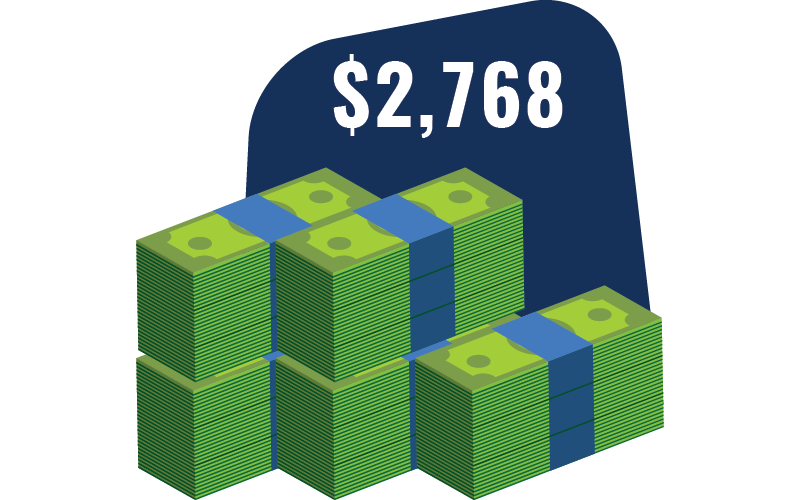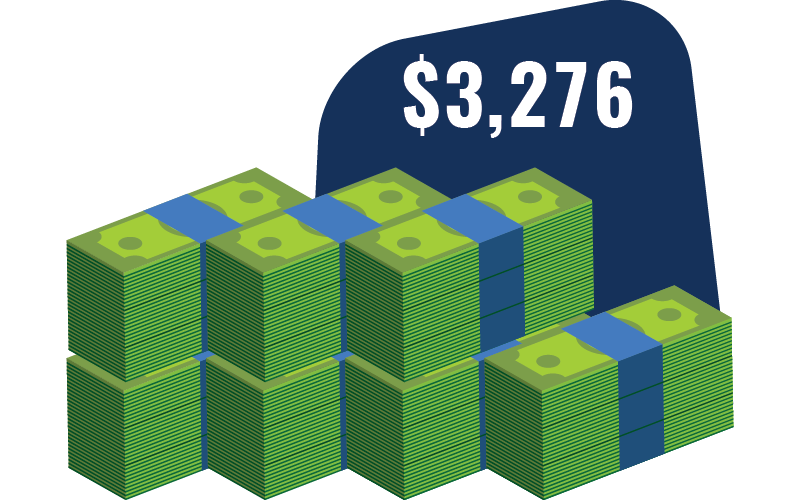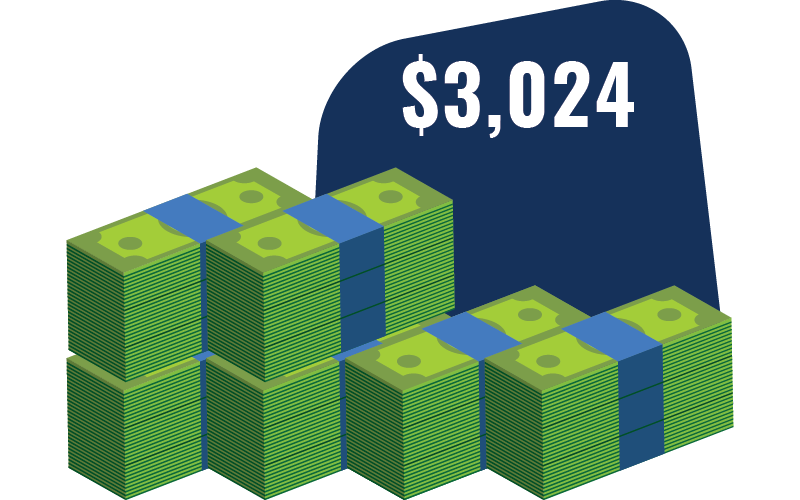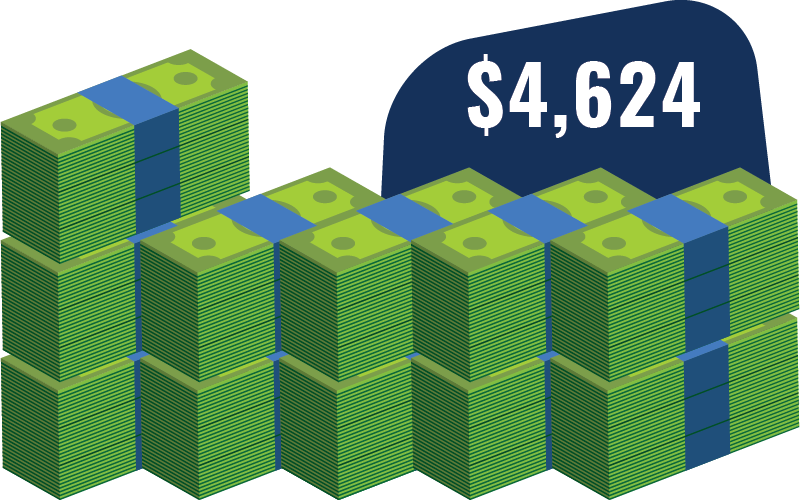Graduation
Education, Employment & EarningsGraduation and Beyond
How a Degree can Lead to Success
Graduating from college with a degree or certificate can be an important stepping stone to a fulfilling career. A degree at any level can lead to greater employment opportunities and higher wages. Since different careers require different levels of education or expertise, NOVA offers a variety of degree and certificate programs so students can pursue the path that best fits their personal goals and interests.
Earning a certificate can help students pursue technical careers or provide job training for their current position. Associate of Applied Arts (A.A.A.) and Associate of Applied Science (A.A.S.) degrees prepare graduates for employment in many technical and occupational fields. Students interested in continuing their education at a four-year institution can earn an Associate of Arts (A.A.) or Associate of Science (A.S.) degree, which provide course credits toward a bachelor’s degree. Each of these awards can help graduates to be more competitive in today’s job market.
Nationwide NUMBERS

57%
of students earned a degree or certificate within six years of enrolling at a college or university for the first time.1
Over a lifetime, individuals with associate degrees earn nearly
one-third
more than those with only a high school diploma.2

57%
of students earned a degree or certificate within six years of enrolling at a college or university for the first time.1

Over a lifetime, individuals with associate degrees earn nearly
one-third
more than those with only a high school diploma.2

38%
of community college students attend classes full-time;4 full-time students are more likely to graduate.5
38%
of community college students attend classes full-time;4 full-time students are more likely to graduate.5

By 2020
47%
of jobs will require an associate degree or higher.3

By 2020
35%
of jobs will require a bachelor’s degree or higher.3
Nationwide NUMBERS

Over a lifetime, individuals with associate degrees earn nearly
one-third
more than those with only a high school diploma.2

57%
of students earned a degree or certificate within six years of enrolling at a college or university for the first time.1

38%
of community college students attend classes full-time;4 full-time students are more likely to graduate.5

By 2020
47%
of jobs will require an associate degree or higher.3

By 2020
35%
of jobs will require a bachelor’s degree or higher.3
INCOME GROWTH BY DEGREE
Among graduates from Virginia institutions, individuals with associate degrees in occupational and technical fields can earn higher salaries than those with bachelor’s degrees immediately after graduation. However, over time, the earning potential for bachelor’s graduates can far exceed that of associate graduates.6

A.A. or A.S.

A.A.A. or A.A.S.

Bachelor’s Degree
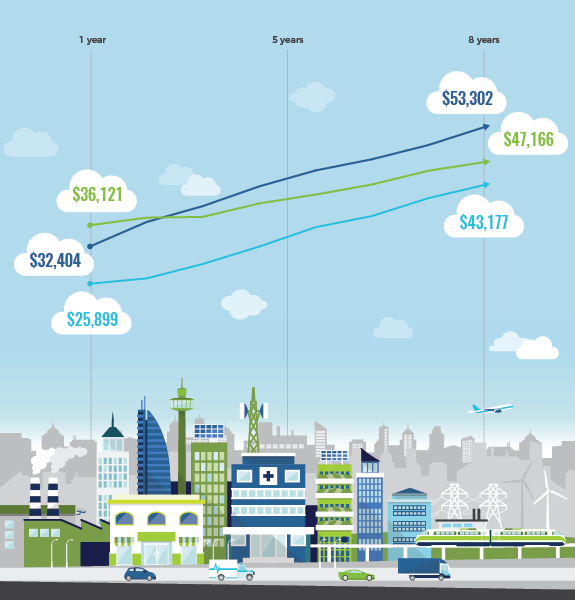
INCOME GROWTH BY DEGREE
Among graduates from Virginia institutions, individuals with associate degrees in occupational and technical fields can earn higher salaries than those with bachelor’s degrees immediately after graduation. However, over time, the earning potential for bachelor’s graduates can far exceed that of associate graduates.6



A.A. or A.S.
A.A.A. or A.A.S.
Bachelor’s Degree

A.A. or A.S.

A.A.A. or A.A.S.

Bachelor’s Degree

GRADUATION RATES OF NOVA STUDENTS
Graduated: Earned a certificate, associate degree, and/or bachelor’s degree from NOVA or another two- or four-year institution within six years.
Students who first enrolled at NOVA full-time were more likely to graduate within six years compared to students who enrolled part-time or students who alternated between full- and part-time enrollment. The graduation rate also varied by age and gender.5
Enrollment Intensity
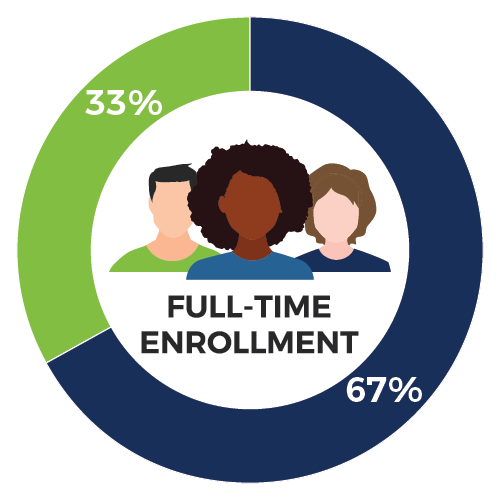
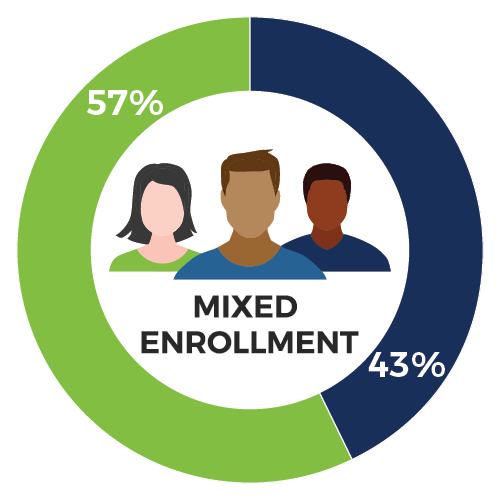
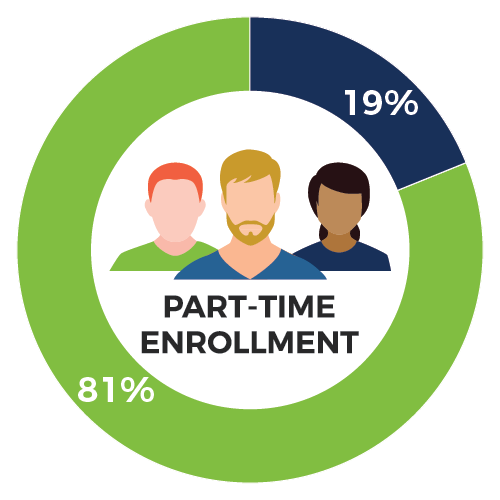



Age at First Entry
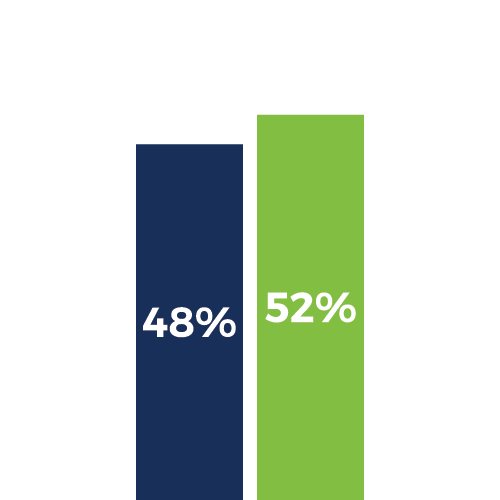
Age 20 & under
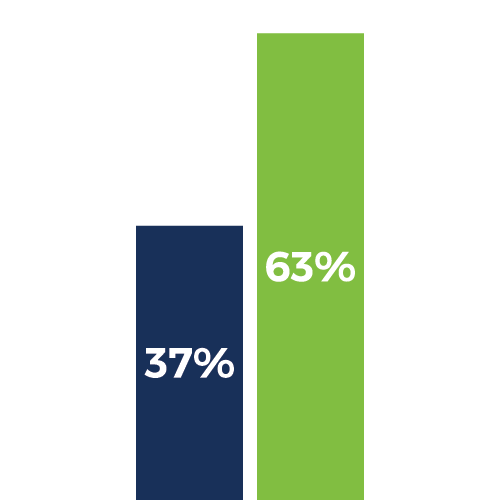
Age 21–24

Age 25 & over

Age 20 & under

Age 21–24

Age 25 & over
Gender
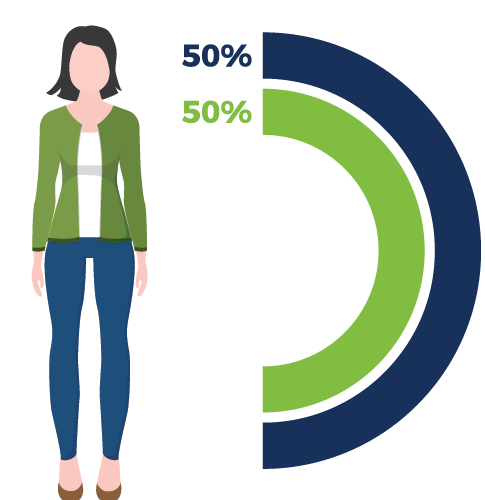
50%
of NOVA females graduated
41%
of NOVA males graduated
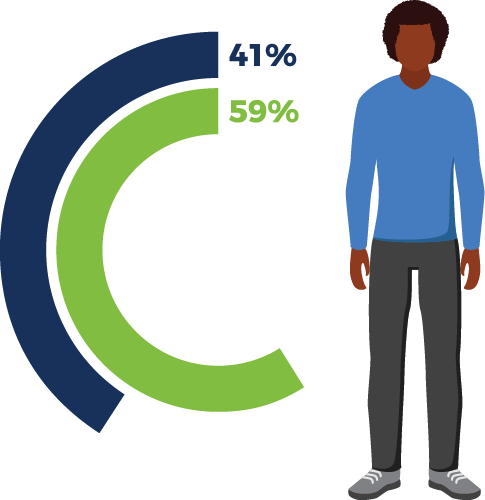

41%
of NOVA males graduated
50%
of NOVA females graduated

High-Growth Careers
Over the next decade, there will be many career opportunities available to associate degree and bachelor’s degree graduates. Career options for associate degree graduates skew toward occupational and technical fields, whereas career options for bachelor’s degree graduates span a larger variety of industries and occupations.
For each degree, the top five careers projected to have the largest number of new job openings nationwide over the next decade are listed below.8
Associate Degree Graduates
Bachelor’s Degree Graduates
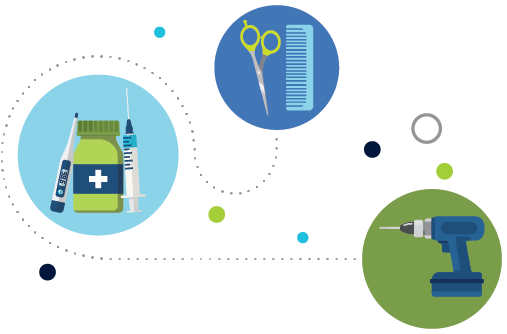
- Medical assistants
- Nursing assistants
- Heavy and tractor-trailer truck drivers
- Licensed practical/vocational nurses
- Hairdressers, hairstylists, and cosmetologists

- Registered nurses
- Software developers
- General and operations managers
- Accountants and auditors
- Market research analysts
Associate Degree Graduates

- Medical assistants
- Nursing assistants
- Heavy and tractor-trailer truck drivers
- Licensed practical/vocational nurses
- Hairdressers, hairstylists, and cosmetologists

- Medical assistants
- Nursing assistants
- Heavy and tractor-trailer truck drivers
- Licensed practical/vocational nurses
- Hairdressers, hairstylists, and cosmetologists
Bachelor’s Degree Graduates
- Registered nurses
- Software developers
- General and operations managers
- Accountants and auditors
- Market research analysts


- Registered nurses
- Software developers
- General and operations managers
- Accountants and auditors
- Market research analysts
Learn More
Resources for Students, Faculty, and Staff
Graduating with a college degree is a big accomplishment, but one that requires a significant amount of time and effort to achieve. As a result, many students will encounter obstacles that hinder or stall their progress toward completion. Common obstacles include the cost of college, availability of financial assistance, and a lack of involvement in the college community or with other peers on campus. Further, the longer a student takes to choose a program of study and declare a major, the longer it will take to finish the courses required to graduate.
NOVA offers a variety of support services to help students overcome these obstacles.

Paying for College
The Financial Aid Office provides financial assistance and advising to help students understand how they can cover the cost of college. Students are encouraged to apply for federal, state, and NOVA-specific scholarships, grants, and loans, including need-based financial aid.
Learn more about financial aid and how to apply at: http://www.nvcc.edu/financialaid/index.html

Getting Involved
Students are encouraged to become involved with the NOVA community by joining a sports team or intramural sport, acting in an upcoming play, volunteering around campus, or listening to a guest lecturer. Students can learn more by visiting the Office of Student Life.
View Campus calendars for a list of upcoming events at: http://www.NVCC.edu/calendar

Choosing a Program of Study
Counselors and advisors are available on all campuses to assist students with course selection and career advice. Exploring academic programs and choosing a major early on can help students stay on track toward graduation. By meeting regularly with an advisor, students can discuss their academic and career goals and learn more about their options.
Students can schedule an appointment to meet with a counselor at: http://www.nvcc.edu/advising/index.html

Transferring Credits
NOVA partners with over 50 colleges and universities to offer Guaranteed Admission Agreements (GAAs) to students who meet the pre-determined requirements. Students can save thousands in tuition costs by attending NOVA before transferring, and this process can be made easier with a GAA.
View Guaranteed Admission Agreements from partner schools at: http://www.nvcc.edu/gaa
Citations
- Shapiro, D., Dundar, A., Huie, F., Wakhungu, P.K., Yuan, X., Nathan, A., and Bhimdiwali, A. (2017). Completing College: A National View of Student Completion Rates – Fall 2011 Cohort. National Student Clearinghouse Research Center.
- Carnevale, A.P., Rose, S.J., and Cheah, B. (2011). The College Payoff: Education, Occupations, Lifetime Earnings. The Georgetown University Center on Education and the Workforce.
- Carnevale, A.P., Smith, N., and Strohl, J. (2013). Recovery: Job Growth and Education Requirements Through 2020. The Georgetown University Center on Education and the Workforce.
- U.S. Department of Education, National Center for Education Statistics, IPEDS, Fall 2016, Fall Enrollment component (final release data).
- (2017). Transfer Trends and Patterns Series: Report 3, Six-Year Outcomes from the National Student Clearinghouse Completions Benchmark Report: Fall 2009 Cohort. NOVA Office of Institutional Effectiveness and Student Success.
- (2017). EOM18: Exploration of Wages Over Time by Degree, Graduates of 2007-08. Retrieved from State Council of Higher Education for Virginia (SCHEV) website on Feb. 16, 2018: http://research.schev.edu/eom/eom18_report.asp.
- Chen, Allen. (2017). More education: Lower unemployment, higher earnings. Career Outlook, U.S. Bureau of Labor Statistics.
- (2017). Projections of occupational employment, 2016–26. Career Outlook, U.S. Bureau of Labor Statistics.
- Shapiro, D., Dundar, A., Huie, F., Wakhungu, P.K., Yuan, X., Nathan, A., and Bhimdiwali, A. (2017). Completing College: A National View of Student Completion Rates – Fall 2011 Cohort. National Student Clearinghouse Research Center.
- Carnevale, A.P., Rose, S.J., and Cheah, B. (2011). The College Payoff: Education, Occupations, Lifetime Earnings. The Georgetown University Center on Education and the Workforce.
- Carnevale, A.P., Smith, N., and Strohl, J. (2013). Recovery: Job Growth and Education Requirements Through 2020. The Georgetown University Center on Education and the Workforce.
- U.S. Department of Education, National Center for Education Statistics, IPEDS, Fall 2016, Fall Enrollment component (final release data).
- (2017). Transfer Trends and Patterns Series: Report 3, Six-Year Outcomes from the National Student Clearinghouse Completions Benchmark Report: Fall 2009 Cohort. NOVA Office of Institutional Effectiveness and Student Success.
- (2017). EOM18: Exploration of Wages Over Time by Degree, Graduates of 2007-08. Retrieved from State Council of Higher Education for Virginia (SCHEV) website on Feb. 16, 2018: http://research.schev.edu/eom/eom18_report.asp.
- Chen, Allen. (2017). More education: Lower unemployment, higher earnings. Career Outlook, U.S. Bureau of Labor Statistics.
- (2017). Projections of occupational employment, 2016–26. Career Outlook, U.S. Bureau of Labor Statistics.
Learn More
Resources for Students, Faculty, and Staff
Graduating with a college degree is a big accomplishment, but one that requires a significant amount of time and effort to achieve. As a result, many students will encounter obstacles that hinder or stall their progress toward completion. Common obstacles include the cost of college, availability of financial assistance, and a lack of involvement in the college community or with other peers on campus. Further, the longer a student takes to choose a program of study and declare a major, the longer it will take to finish the courses required to graduate.
NOVA offers a variety of support services to help students overcome these obstacles.

Paying for College
The Financial Aid Office provides financial assistance and advising to help students understand how they can cover the cost of college. Students are encouraged to apply for federal, state, and NOVA-specific scholarships, grants, and loans, including need-based financial aid.
Learn more about financial aid and how to apply at: http://www.nvcc.edu/financialaid/index.html

Getting Involved
Students are encouraged to become involved with the NOVA community by joining a sports team or intramural sport, acting in an upcoming play, volunteering around campus, or listening to a guest lecturer. Students can learn more by visiting the Office of Student Life.
View Campus calendars for a list of upcoming events at: http://www.NVCC.edu/calendar

Choosing a Program of Study
Counselors and advisors are available on all campuses to assist students with course selection and career advice. Exploring academic programs and choosing a major early on can help students stay on track toward graduation. By meeting regularly with an advisor, students can discuss their academic and career goals and learn more about their options.
Students can schedule an appointment to meet with a counselor at: http://www.nvcc.edu/advising/index.html

Transferring Credits
NOVA partners with over 50 colleges and universities to offer Guaranteed Admission Agreements (GAAs) to students who meet the pre-determined requirements. Students can save thousands in tuition costs by attending NOVA before transferring, and this process can be made easier with a GAA.
View Guaranteed Admission Agreements from partner schools at: http://www.nvcc.edu/gaa
Citations
- Shapiro, D., Dundar, A., Huie, F., Wakhungu, P.K., Yuan, X., Nathan, A., and Bhimdiwali, A. (2017). Completing College: A National View of Student Completion Rates – Fall 2011 Cohort. National Student Clearinghouse Research Center.
- Carnevale, A.P., Rose, S.J., and Cheah, B. (2011). The College Payoff: Education, Occupations, Lifetime Earnings. The Georgetown University Center on Education and the Workforce.
- Carnevale, A.P., Smith, N., and Strohl, J. (2013). Recovery: Job Growth and Education Requirements Through 2020. The Georgetown University Center on Education and the Workforce.
- U.S. Department of Education, National Center for Education Statistics, IPEDS, Fall 2016, Fall Enrollment component (final release data).
- (2017). Transfer Trends and Patterns Series: Report 3, Six-Year Outcomes from the National Student Clearinghouse Completions Benchmark Report: Fall 2009 Cohort. NOVA Office of Institutional Effectiveness and Student Success.
- (2017). EOM18: Exploration of Wages Over Time by Degree, Graduates of 2007-08. Retrieved from State Council of Higher Education for Virginia (SCHEV) website on Feb. 16, 2018: http://research.schev.edu/eom/eom18_report.asp.
- Chen, Allen. (2017). More education: Lower unemployment, higher earnings. Career Outlook, U.S. Bureau of Labor Statistics.
- (2017). Projections of occupational employment, 2016–26. Career Outlook, U.S. Bureau of Labor Statistics.



